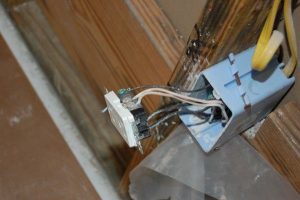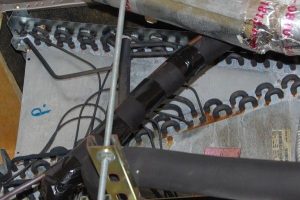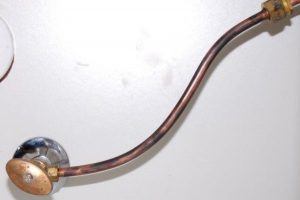Chinese Drywall
What is Chinese Drywall?
Certain companies in China use an unrefined coal residue found in smokestacks in coal-fired power plants in their manufacturing process called “fly ash”. In certain humid and hot climates, this material can release certain gases which include hydrogen sulfide, carbon disulfide, and carbonyl sulfide, which in turn can contaminate the air supply inside the home.
Where is it most common?
The majority of the incidents have been reported in warmer climates, such as Florida, where the conditions are hot and humid. The affected years in which Chinese drywall was used by builders ranges between 2001 – 2009, where the majority of material was used between 2004-2007.
What are the affects?
Exposure to these high levels of airborne sulfides can result in the following physical symptoms:
- sore throat;
- sinus irritation;
- coughing;
- wheezing;
- headache;
- dry or burning eyes; and/or
- respiratory infections.
How can I know if my house has Chinese Drywall?
First, if you ever suspect the presence of Chinese Drywall, it’s always best to hire a professional Inspector who is certified in Chinese Drywall inspections. However, there are certain signs that can help inform you of the probability you may or may not have Chinese Drywall:
- The house has a strong sulfur smell reminiscent of rotten eggs.
- Exposed copper wiring appears dark and corroded. Silver jewelry and silverware can become similarly corroded and discolored after several months of exposure.
- A manufacturer’s label on the back of the drywall can be used to link it with manufacturers that are known to have used contaminated materials. One way to look for this is to enter the attic and remove some of the insulation.
- Drywall samples can be sent to a lab to be tested for dangerous levels of sulfur. This is the best testing method but also the most expensive.
How do I fix it?
If you have Chinese Drywall, the only solution is removing all of it from your home. This can cost tens of thousands of dollars, and significantly reduce the real estate value. This may be a cost that the home owner will have to pay out of pocket, as some insurance companies refuse to pay for the replacement of Chinese Drywall.
However, if you do find the presence of Chinese Drywall, it’s recommended to remove it as soon as possible. Homes affected by this problem can experience significant corrosion to the metallic appliances and piping, as well as cause significant health issues for the residents.



